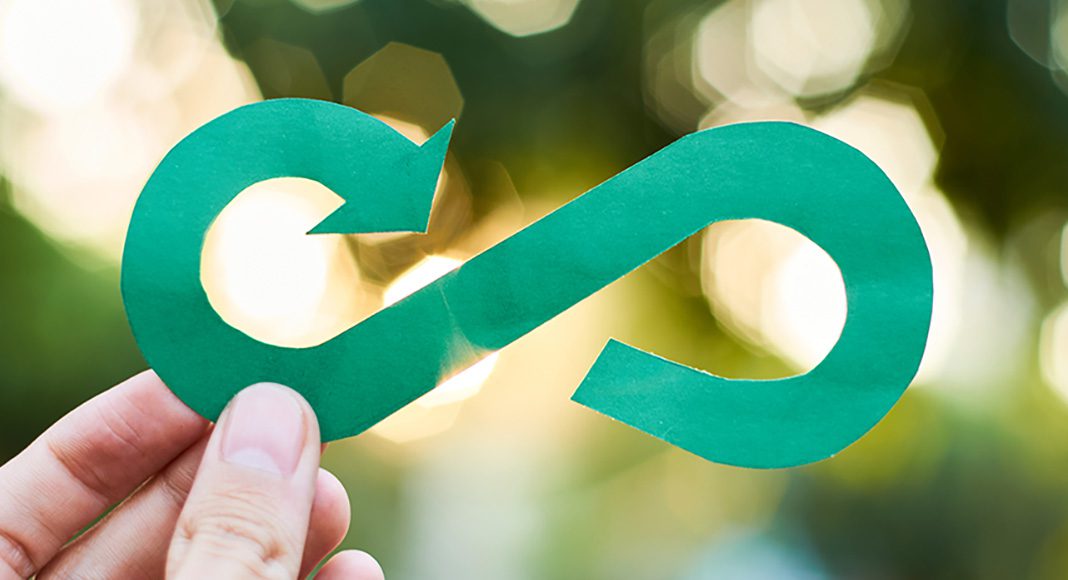Designing Packaging for the Circular Economy
What is a Circular Economy?
In our existing economy, we take natural resources from the earth, create products and throw them away as waste. The waste travels from our trashcan and ultimately ends up in a landfill or in the environment. It’s a linear process that has a definitive start and end point. It’s what some call the “take-make-waste” system.
A circular economy offers an alternative to our current resource-intensive approach, offering a framework that aims to address global challenges, including waste and pollution. According to the Ellen Macarthur Foundation, a leading non-profit working to accelerate the transition to a circular economy, a circular economy is based on three design-based principles. These include:
- Eliminating waste and pollution
- Circulate products and materials (at their highest value)
- Regenerate nature
The ultimate result is to produce better outcomes for people and the environment.
How Does This Apply to Packaging?
Reducing the environmental impact of a package requires more than using sustainable materials. It requires an entirely different approach to how we design and use packaging, starting with the question of whether or not we even need it.
Traditionally, most plastic packaging follows a linear model: A package is created using materials from the earth. Then, once someone consumes the product, the package becomes waste and is thrown away.
Circular design challenges this approach. It encourages us to adopt new practices that reuse as much of the product and its components as possible by considering the full lifecycle, with the ultimate goal of reducing the environmental impact of our consumption.
With circular design, there is no “end-of-life.” Instead, materials are restored and reused in a closed loop.
Paper is Circular
Compared to plastic packaging, wood fiber-based packaging (paper packaging) is circular by design. Made from renewable resources (trees), wood fibers can be easily recycled up to seven times once the packaging is no longer needed. This allows the resources (fibers) to maintain their highest value for as long as possible, which reduces waste. In 2021, paper recycling rates were 68 percent according to the American Forest & Paper Association, up nearly 3 percent from the previous year, and more than four times the rate of plastic recycling.
Petroleum, a non-renewable resource, makes up most plastic packaging materials. When you consider the amount of plastic packaging in use, 82.2 million tons according to the most recent EPA reports, the extent of this impact comes into focus, particularly when you consider that only about 14 percent is collected for recycling.
Low plastic recycling rates can largely be attributed to accessibility. Where most curbside recycling programs accept paper and glassine packaging, most do not accept plastic packaging materials. This is one of the primary reasons why in early 2022, Amazon completely transitioned to recyclable paper packaging in the UK, and continues to reduce the amount of single-use packaging used throughout its North American operations as it works to improve the sustainability of its business.
Steps to More Circular Packaging
As you look to improve the circularity of your packaging, JBM works with you to eliminate plastic waste and transition to a curbside recyclable alternative. But we know that transition doesn’t happen with the flip of a switch: it requires a thorough understanding of your needs and the solutions available. As we guide customers through their path to plastic free packaging, these are just a few of the steps we follow:
- Rethink your packaging:Examine every element of your packaging, from its purpose to its components, to assess its function and construction. Does it educate your customers? Protect your product? Enhance your brand? Tell the story of your company?
- Eliminate what’s not necessary: Evaluate the packaging material—can you simplify the package design and reduce what’s needed? Can you print your message on the package rather than a sticker to minimize materials and improve recyclability? If it doesn’t have a function, consider eliminating it.
- Design for reuse or recycling:To allow packaging materials (e.g. paper fiber) to be reused and recirculated at their highest value, another way to improve the circularity of your packaging is designing for reuse. For example, a customer who receives a t-shirt in a uniquely designed, eco-friendly glassine paper package may be more inclined to use that package as gift wrapping, book covers, art activities or a way to package leftovers.
When items can’t be reused, recycling packages allows the material to be recirculated—the best next step. While recycling rates are around 70 percent in the U.S., including messages on the packaging encouraging recycling can also help increase compliance.
- Increase recyclable content: When designing your package, include substrates made from recycled content to ensure its circularity. The Sustainable Packaging Coalition’s “Design for Recycled Content Guide” offers recommendations to help educate you about the opportunities, challenges and best strategies for incorporating recycled content into your packaging.
Communicate and encourage recycling: Better packaging starts with good design, but it ends with your customers. Giving them clear instruction on the importance of reusing and recycling materials will help increase compliance. In addition, educate them on the benefits of the materials you’ve selected to further empower them to purchase with circularity in mind in the future.
Why Circularity Is Important
Our issues associated with packaging waste are well documented—look no further than the closest freeway to see single-use plastics littering the sides of the road. In addition, each year, 11 million metric tons of plastic enter the ocean (on top of the estimated 200 million tons currently circulating).
This has become such an issue globally that the United Nations has developed the “End Plastic Pollution” resolution, which establishes a timeline for members to negotiate an agreement for preventing and reducing plastic waste.
Domestically, we’re also beginning to see states take action to reduce plastic pollution. California recently passed the Plastic Pollution Prevention and Packaging Producer Responsibility Act, one of the most targeted pieces of legislation restricting the use of single-use plastic packaging in the U.S.
California follows Colorado, Maine and Oregon in their introduction of legislation that puts the responsibility on producers for reducing single-use plastic packaging, known as EPR. If it has not already, this legislation will likely impact you soon, so switching to more sustainable packaging now can help you get ahead of the game.
Experts estimate that reducing plastic waste in our environment starts with a transition to a circular economy. In oceans and marine environments, they believe implementing circular systems could reduce plastic flow by as much as 80 percent.
If you’re looking to improve the circularity of your packaging and eliminate plastic, we can help. Learn more about our path to plastic-free or call us today!
Additional Resources:
- Harvard Business Review: “4 Steps to Drive Effective Circular Strategies for Consumer Goods and Retail Businesses”
- Ellen MacArthur Foundation: https://ellenmacarthurfoundation.orgbe
- US EPA: What is a Circular Economy?






